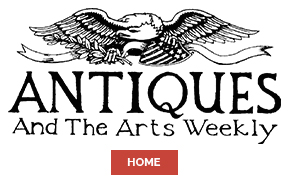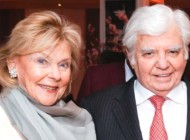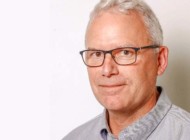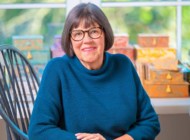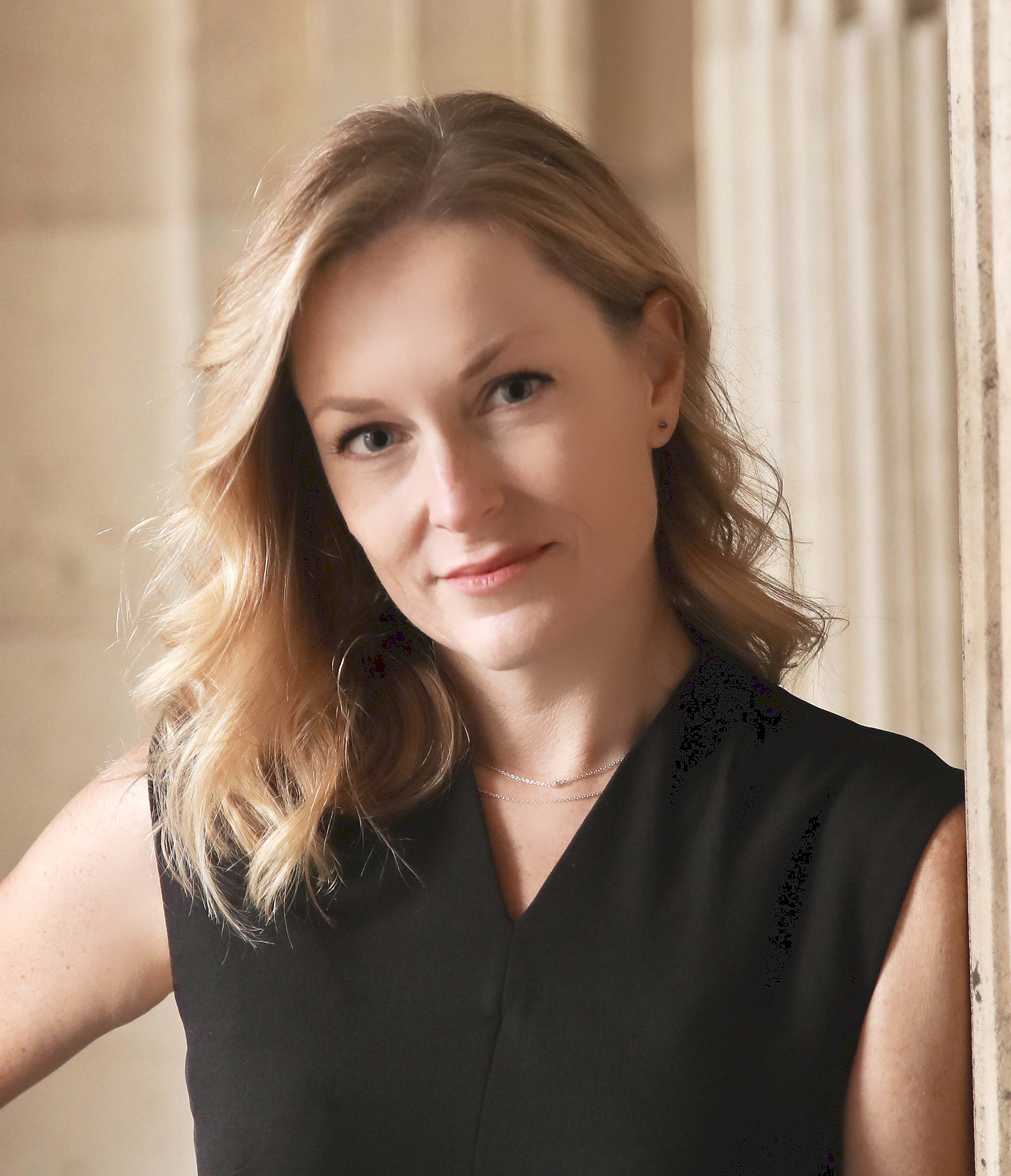
Nancy Karrels, associate director of provenance and object histories at the National Museum of Asian Art. Photo courtesy of the National Museum of Asian Art, Smithsonian Institution.
The Smithsonian’s National Museum of Asian Art, in Washington, DC, recently appointed Nancy Karrels — an expert in art spoilation, provenance research and restitution — as its associate director of provenance and object histories. She began her tenure on April 7, so Antiques and The Arts Weekly jumped at the chance to speak with her about the position and what it means to be an expert in provenance in the museum world.
Congratulations on your appointment! What drew you to the institution, and the position?
Thank you! It’s a real joy and honor to be part of the provenance team at the National Museum of Asian Art (NMAA) at this point in my career. NMAA has been on my radar for several years because of its incredible reputation for advancing the field of provenance research through professional development initiatives and public programs. While many museums are working diligently to research the provenance of objects in their collections, NMAA has made it part of its mission to make the product of this intense scholarship transparent to the public in the museum’s galleries and website and at the same time helping to train researchers outside our museum in Asian art provenance research — an area that lacks support. These efforts were driven by director Chase Robinson’s expansive vision of provenance research in museums and realized in large part by Dr Jo Gohmann, NMAA’s curator of provenance research and object histories and an undisputed leader in the field.
I wanted to join NMAA in this new capacity to continue the excellent work under way and help take it even further. We’ve reached an inflection point in museums: as we face increasing public scrutiny over the possession of objects potentially relinquished under duress in generations and centuries past, we have a moral imperative to rethink what it means to possess and to exhibit cultural objects responsibly. That means proactively researching the provenance of our existing collection, working with communities of origin on repatriations and shared stewardship for objects with problematic collecting histories and doing exhaustive due diligence before acquiring new objects. It’s part of our duty of care to the American public, for whom we hold our collections in trust. I’m excited by the possibilities this new role offers to debate and to model ethical stewardship through policy decisions, exhibition practices and innovative programming, all in conversation with our visitors in real time.
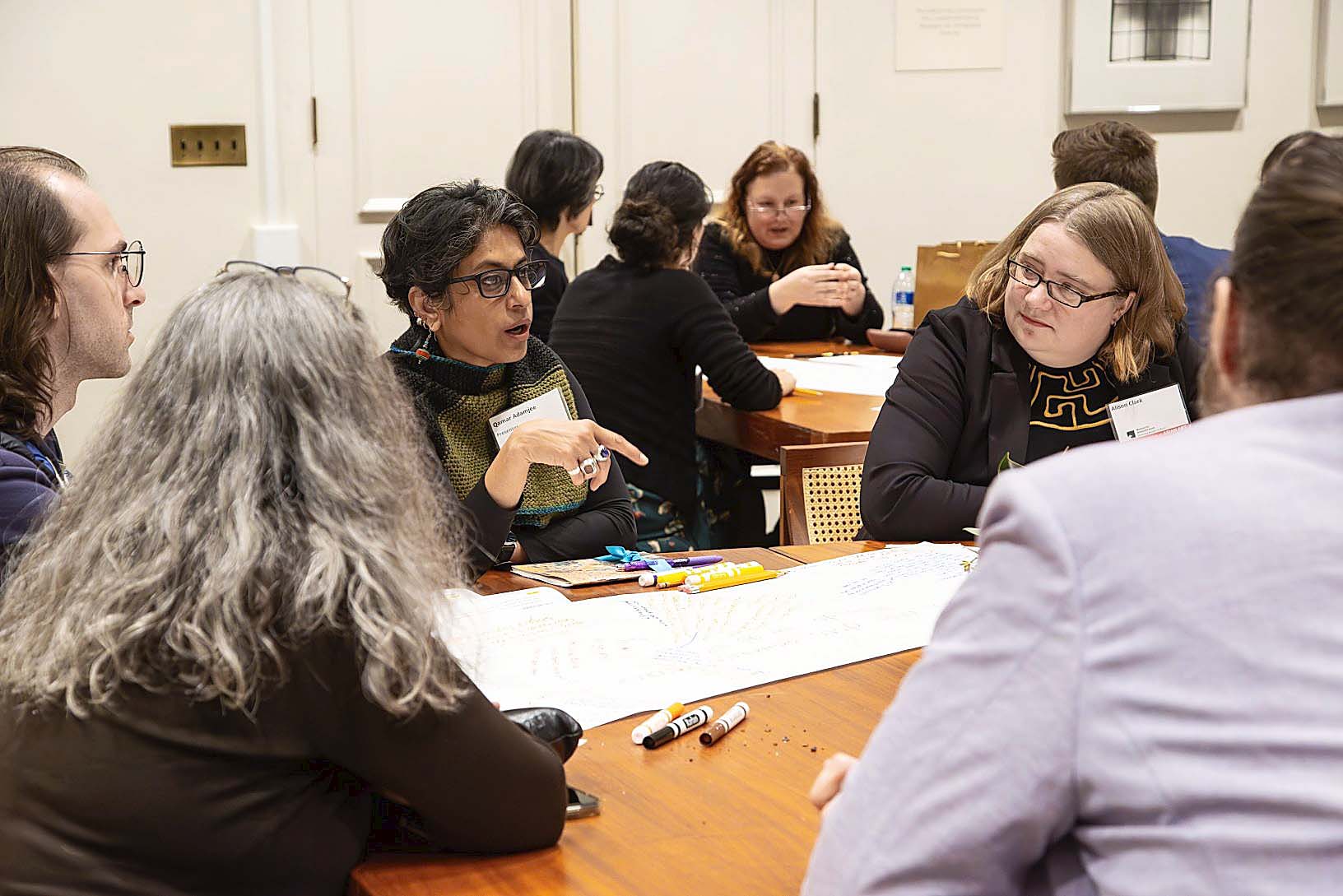
Provenance researchers participating in “Provenance and Asian Art: A Collaborative Workshop and Symposium” at the National Museum of Asian Art in 2023. Photo courtesy of the National Museum of Asian Art, Smithsonian Institution.
What does it mean to be an expert in provenance research? How did you discover this field?
Like many specialized fields, provenance research contains many sub-specialties, and each researcher tends to be “expert” in certain areas — even if at some level we are each generalists. It often takes a village of colleagues to trace a provenance history: some researchers specialize in genealogical research while others may, for example, possess in-depth knowledge of a handful of Nineteenth Century art dealers who sold Japanese works on paper to American collectors.
My provenance research background is in World War II-era art looting, but my PhD is in French art and the circulation of spoliated art during the French Revolutionary and Napoleonic Wars — what they called the “cultural conquests” — which means I have spent years conducting research in French archives and learning about the historic art market through which so much Asian art circulated in the Nineteenth and Twentieth Centuries. My village here at NMAA includes the provenance research department; our deeply knowledgeable collections managers, registrars and archivists; and a talented team of curators, whose subject matter expertise in Asian art is crucial to building our object histories.
I discovered provenance as a law student at McGill University in Montreal at a time when the public was just learning about lawsuits being filed for the restitution of looted artworks primarily against American art museums by the heirs of Jewish victims of the Nazi regime. Having completed my bachelor’s degree in European art, I found both the art historical and legal aspects of these cases fascinating — and still do!
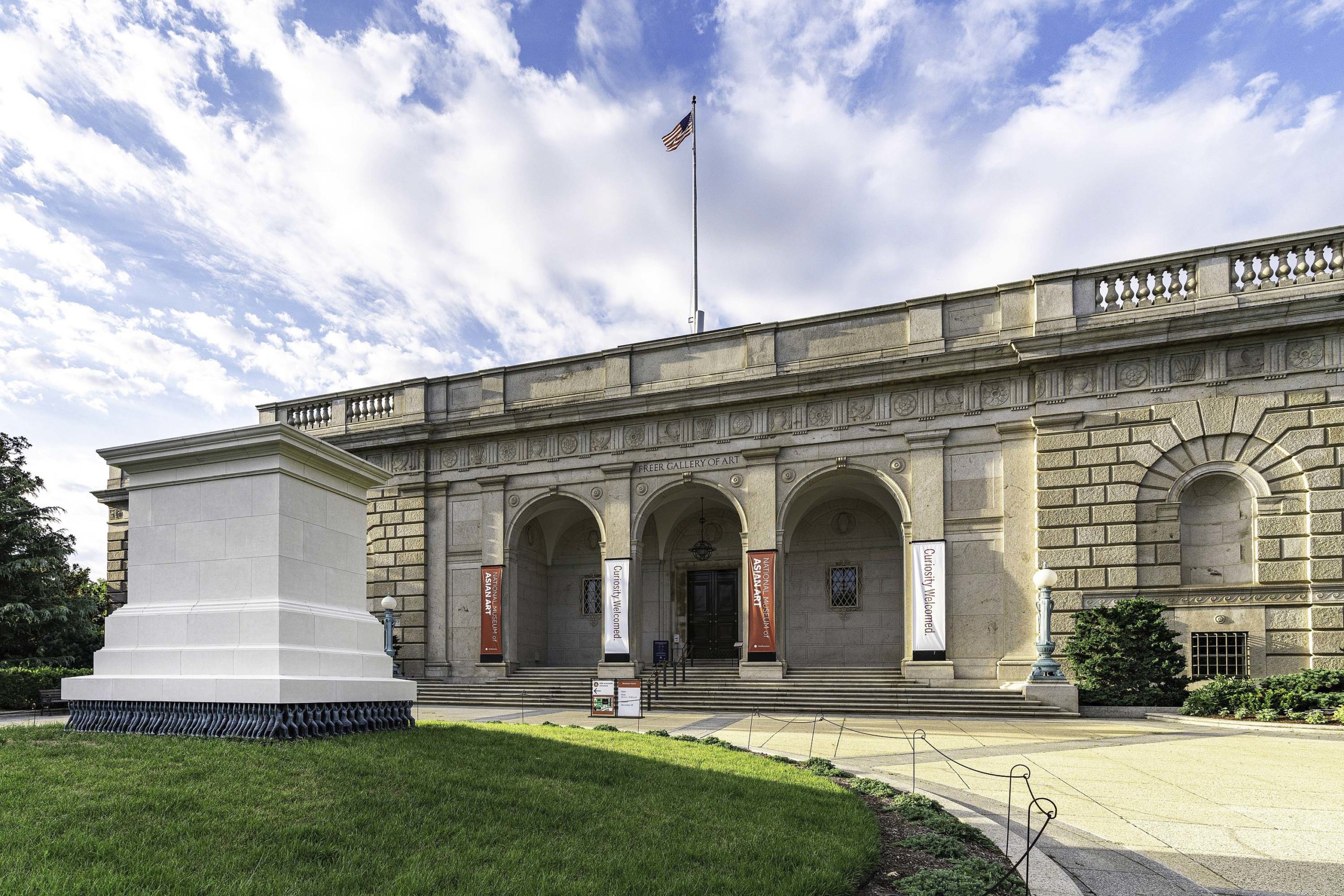
Façade of the Freer Gallery of Art, part of the National Museum of Asian Art. Photo courtesy National Museum of Asian Art, Smithsonian Institution. Photo by Colleen J. Dugan.
In addition to your doctorate in art history, you have a JD. Is a legal background critical to this position? In what ways?
A PhD in art history is far more essential to a provenance researcher role than a JD because hands-on experience with artworks, conducting research in international archives, reading and corresponding in foreign languages, synthesizing information from multiple sources and managing a multi-year project with different funders and stakeholders are the everyday demands a provenance researcher faces. But because of the ambitious projects and actions we’re planning at NMAA, the ability to trace, parse and distill legislation and jurisprudence, to draft and review policy, to counsel the director’s office, to court clients (i.e. donors) and to speak effectively to the larger world about the legal questions are certainly helpful for success in this leadership role. The role also requires key qualities that can’t be conferred by any degree, and that I hope to bring: open-mindedness, equanimity in the face of competing visions and the ability to build mutual trust and respect with colleagues inside the museum and out to achieve a common goal.
Can you explain a little bit about what your new position entails?
NMAA has one of the largest provenance teams of any US museum (two permanent and two contract staff), and we are moving towards increasingly ambitious projects and international collaborations. My job is to help realize these new projects; to advise the director’s office in all matters of provenance, including ethical repatriations and shared stewardship; to increase our capacity to research and share the results of our ongoing provenance research in the galleries and online; to set research priorities; to define and apply in-house provenance policies; and to support and expand our educational mandate to train provenance researchers both internally and externally.
For example, in 2023, NMAA signed a memorandum of understanding with Cambodia and embarked on a multi-year collaborative project with provenance and exhibition components. In my capacity, I’ll be managing knowledge exchanges about provenance research through workshops, peer-to-peer learning opportunities and exhibition strategies for a large show in partnership with our Cambodian colleagues. Another priority is to facilitate the publication of an important resource for Asian art provenance research authored by my colleague, Jo Gohmann.
Like many leadership roles, this position has a strong support element such that my focus is on reducing obstacles and helping those around me produce their best work in service to the museum’s provenance mission.
You have also previously worked on provenance initiatives at the Krannert Art Museum (KAM) and the Canadian Art Museum Directors’ Organization (CAMDO). How did those roles prepare you for this one?
My experiences at both KAM and CAMDO were certainly vital to building the skills and values that inform my work here at NMAA. In the course of designing and executing a World War II-era provenance project at KAM, for example, I was impressed with the level of interest in object histories from visitors and staff who wanted to learn more about the provenance research process. This led to the development of public talks and eventually an exhibition about provenance research methodologies, “Provenance: A Forensic History of Art.” This exhibition shifted how I thought about the public value of provenance research: visitors expressed that they understood and appreciated how seriously KAM took its stewardship responsibilities through our commitment to transparency about the research. When I was interviewed for NMAA, I was very clear about my commitment to addressing provenance head-on in the galleries — and I was pleased to find kindred spirits here.
The Canadian Holocaust-Era Research Project for CAMDO was an enormous undertaking involving provenance research in six museums simultaneously. This role taught me that museums — and even collections within museums — cannot always be subject to identical provenance policies and procedures because each institution brings distinct histories, objects, attitudes and restrictions. We’re very fortunate at NMAA to have the resources, expertise, and mandate to be on the vanguard of provenance research and object histories. But we, too, face limits in how much we can actually do. Working with CAMDO gave me a deep appreciation for the gap that can exist between good intentions and the real world when it comes to provenance research. This is a grounding lesson I bring into my professional practice every day.
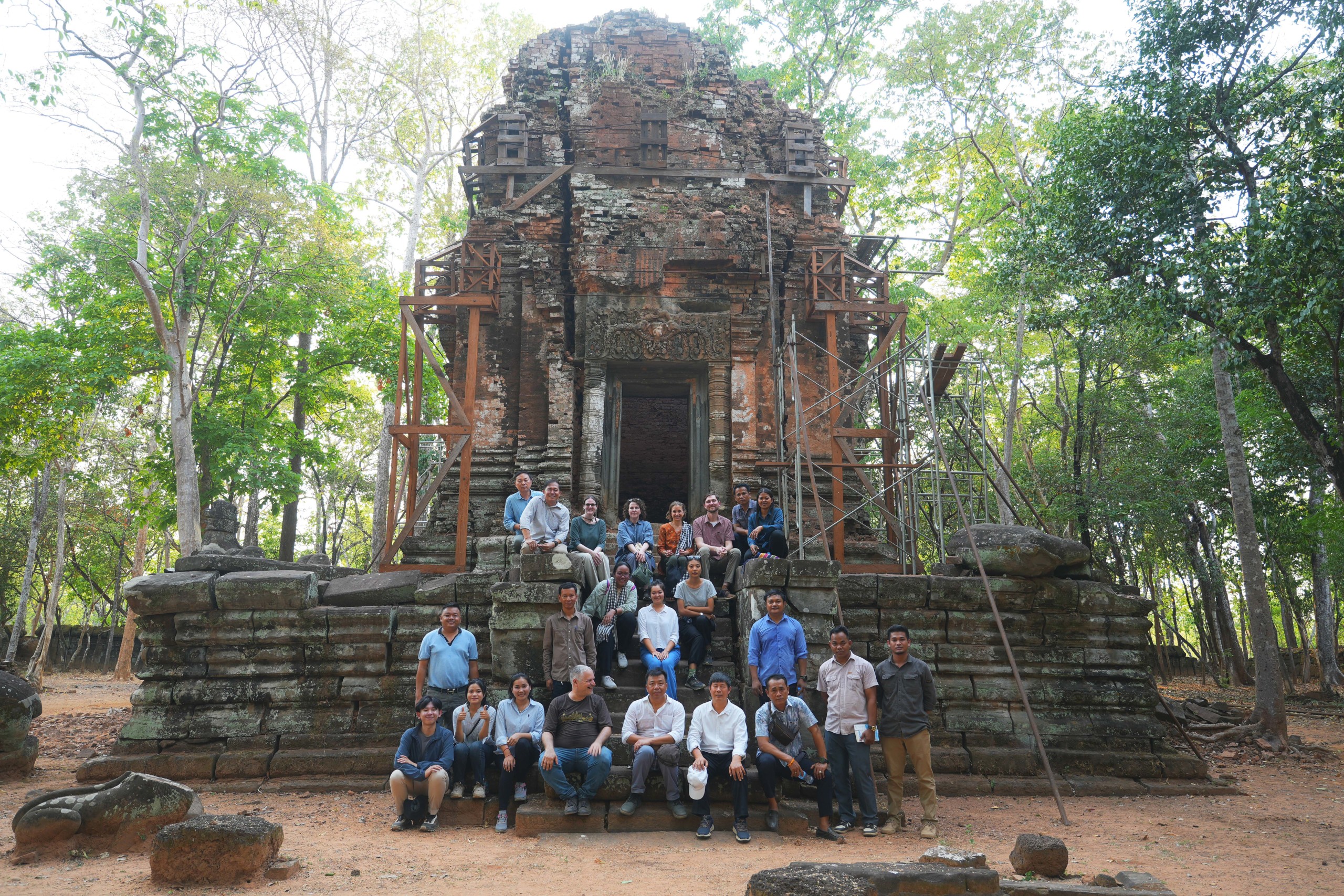
A delegation from the National Museum of Asian Art traveled with key members of Cambodia’s Ministry of Culture and Fine Arts as well as the National Authority for Preah Vihear to temples at Koh Ker, experiencing the latest conservation and archaeological research. © NEM Charan, National Authority for Preah Vihear.
Are you able to share with our readers any of the pieces you’ve had a hand in researching the provenance on?
I can talk about object histories all day! Here’s one case that stands out for me:
As part of the research process, provenance researchers examine objects on all sides to look for clues — stickers, stamps, watermarks, dirt, to name a few elements — to help us reconstruct the life of the object. If a sculpture has been in an art dealer’s shop, it might have a stock number written on the bottom; if a painting appeared in an art exhibition, its stretcher could feature a sticker from the exhibiting museum. (This is why I find the back of paintings as fascinating as the front.)
Early in my career, I researched a French painting in a prominent art museum. On the back of the frame, I spotted a stamp from the Reichsleiter Rosenberg Taskforce, a notorious Nazi art looting squad that operated in Europe during World War II. Immediately, this discovery raised a red flag: the museum appeared to be in obvious possession of Nazi-looted art. However, provenance research revealed that while the painting had indeed been stolen by Nazi forces from a Jewish collector in wartime France, the painting was restituted to its proper owner after the war, then eventually put on the art market before arriving at its current museum home through normal and licit channels.
I learned a valuable lesson that I now strive to transmit to our interested and well-meaning public: provenance research is complex and nuanced and ongoing, and even when we become impatient with how long the process is taking, it serves us to be patient, continue to ask questions and engage in conversations before we draw conclusions on the history of any given object.
Are there nuances with researching the provenance of Asian objects that are unusual or specific to the region?
Yes. The history of Asian art is long and rich, and sometimes the research methods and yardsticks we might use for, say, European art are less helpful or realistic with Asian art. For example, in some cases we are encountering objects created hundreds of years ago for the purpose of international trade, in a culture with no tradition of formal documentation to mark an exchange, such as purchase receipts or export certificates. At the same time, we are working with international laws and Smithsonian Institution policies that urge us to document when an artwork left its country of origin. How do we do this? Can we accept a different kind of material than a sheet of paper as proof of provenance? Is it realistic to place the same standards for export on each country represented in our collection, or should rules vary according to documentary and legislative traditions? These are the sorts of questions we grapple with daily and for which I aim to offer guidance.
It’s also the kind of nuance we try to convey with our educational offerings, such as NMAA’s ongoing “Unpacking Provenance” series in partnership with the German Stiftung Preußischer Kulturbesitz (SPK), in which a group of experts together unpacks the provenance of individual objects of Asian art.
—Kiersten Busch
